June Newsletter 2015
Summer Ahead
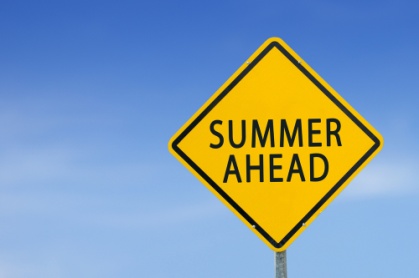 Did you forget sunscreen?! Goggles?! Be sure to stop by the Front Desk to purchase these "fun in the sun" essentials!
Did you forget sunscreen?! Goggles?! Be sure to stop by the Front Desk to purchase these "fun in the sun" essentials! Summer is approaching and rising temperatures will leave you begging for refreshments. Although members/guests are permitted to enter PRSC with outside food/drink, admittance of outside alcohol is STRICTLY PROHIBITED. All members/guests entering PRSC with an ice chest/cooler, will be asked to allow one of our helpful front desk attendees to inspect for any outside alcohol. Any outside alcohol that enters the club will be held at the front desk until your departure. The only outside alcohol permitted is UNOPENED wine, that will require a corking fee of $9.00. Let’s all enjoy some fun and more importantly safe activities this summer! Thank you for your cooperation.
Don't forget to enter for a chance to win a Talley Farm Fresh Harvest Box. These boxes are filled with organic vegetables and fruits, saving you a trip to the pesky grocery store. With each towel you bring, we will give you 3 raffle tickets, bring in 2 towels and receive 6 tickets!
If a refreshing beer or soft drink doesn't quench your thirst, don't forget about our tasty smoothies. Flavors range from chocolaty Peanut Butter Cup to tangy Tropical Oasis! Get your 16oz or 20oz smoothie TODAY!
PRSC Summer Sports Program
Welcome Back Head Counselors: Maddie Berry and Hannah Paul!
Program Highlights
Tennis & Swim Instruction
Basketball, Volleyball & Soccer
Camp T-shirts & Healthy Eating
Lots of Outdoor Fun!
 Monday through Friday 8 – 4 pm
Monday through Friday 8 – 4 pmPRSC Sports Program is an activity-based day that will keep your child moving and excited! Each week includes tennis instruction, swim instruction, soccer, Fit Kids classes, yoga, obstacle courses, and a weekly adventure. All of our instructors have been background checked, and we will have certified lifeguards on deck ensuring your children are safe.
Lunch and Snacks
A healthy lunch may be ordered from our Union Café for only $5.00. Daily snacks will be included. Each weekly camper will receive a special PRSC Sports Program t-shirt.Please sign your child in and out each day on the sheet provided at the front desk of the club.
What to Bring
Campers should bring a backpack with bathing suit, towel, water bottle and sunscreen every day. Campers are advised to wear non-marking soled tennis shoes (no sandals or flip flops). Campers are encouraged to bring a second change of clothing.
Swim Test
All campers must complete a swim test prior to entering the pool. Campers must be able to swim on length of the pool without touching the side or the bottom. If a child is unable to swim the length of the pool they will be required to wear a life vest or stay in the shallow portion of the large pool.
Cost
Members: $45/day or $180/week (10% discount for second child)Nonmembers: $55/day or $220/week (10% discount for second child)
Lunch: $5.00 (snack is included in the cost of camp)
Space is limited, so reserve your child’s spot today!
Completion of the full registration packet is required before the start of program. A credit card must be placed on file for all nonmembers to participate. Please go to our website, www.pasoroblesclub.com to download, print, and complete the packet. Registration packet and payment must be turned into the front desk to reserve your spot in the program(s). Please contact the front desk at 805-239-7397 if you have any questions.
PRSC AQUATICS: June 2015
***SUMMER DISCOUNT, $10 OFF ANY SWIM LESSON PURCHASE UNTIL 6/10***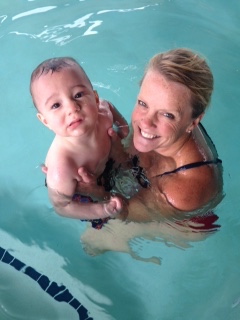
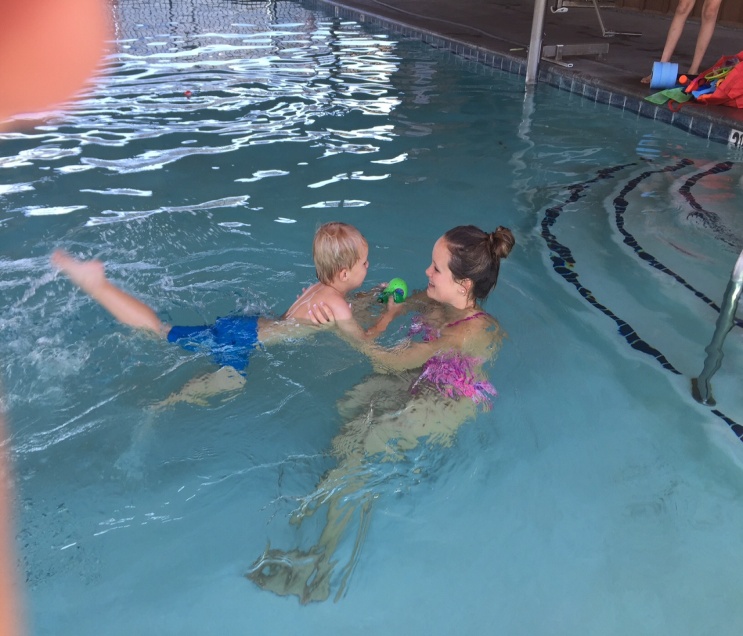
SUMMER SWIM PROGRAMS AT PRSC:
With the school year coming to a close and the club’s extended hours, that can only mean one thing…SUMMER! Beginning June 15th, our group lessons will begin with classes that are suitable for all ages and skill levels. During the summer we will also be extending some of our programs into the late afternoon including Parent & Me, Youth Masters, Private and Semi – Private Lessons. ***Please keep in mind that if you have multiple children, we can make lesson times as convenient as possible***GROUP LESSONS: Beginning June 15th , 4 x 2 week sessions will be offered this summer!
Monday – Thursday at 10:00, 10:45, & 11:30 - We will offer afternoon sessions if there is interest.
Member $88/ Guest $104 (8 lessons; 30 minute sessions)
An encouraging group environment for swimmers of all skill levels, where becoming water safe is the primary goal. For our upper level swimmers, we will also be working on all four strokes, efficiency, and being able to swim multiple laps at a time. Children must be fairly comfortable with back floats and putting their face in the water…these lessons are not meant for a brand new swimmer.
PARENT AND ME New Session: Begins May 4th: Choose 2 days a week or attend all 4 days!
Monday – Thursday at 11:30am.
*New sessions opening at 10:45am-11:15am, 4:30pm, and Saturdays at 11am
Member $88/ Guest $104 (8 lessons; 30 minute sessions)
Members and guests come to participate in a fun-filled group setting where swimming and water safety are fun! This ½-hour class consists of songs, games, and creating confidence in the water, and is the perfect environment for our youngest future swimmers.(*minimum of 3 participants to begin. Collecting interest at the front desk now! Call 805-239-7397)
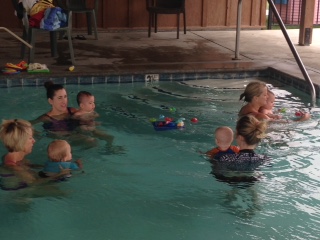
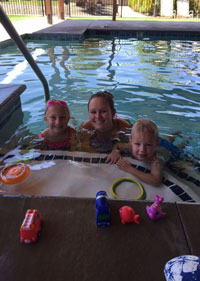
Private, Semi – Private, and our Dolphin Explorer Lessons will be offered throughout the summer as well! Please contact Aquatics Director, Jodi McDowell, at [email protected] or call our Front Desk at (805) 239-7397 ext 104 to schedule your lessons.
Our year-round classes will still be available this summer:
Adult Swim Classes:Technique Class: ($60/month for members and $80/month for guests). Please let us know if you are interested in improving your swimming or learning for the first time! Call the front desk to be added to the interest sign up sheet!
Advanced Adult Swimming: This will be an interest-based extension of the technique class. This course will allow the adult swimmer a workout-based approach, where they can come for stroke and breathing feedback while stepping through a more advanced workout, increase distance swimming and learn competitive technique where desired.
Youth Masters Class: If you have a child who has been in swim lessons but isn’t yet ready for Swim Team, we have a class for you as well. Jaclyn Parson is working with groups of children who have progressed through swim lesson sessions, but cannot yet swim 25 yards in the pool consistently, one of our requirements for our awesome Paso Robles Swim Team. If you are interested in pursuing a class like this for your child, or for more information, please contact Jaclyn Parson through the front desk or via email [email protected]
$88 Member/ Guest $104 (8 lessons; 30 minute sessions)
***DON’T FORGET OUR SUMMER DISCOUNT HAS BEEN EXTENDED! $10 OFF ANY SWIM LESSON PURCHASE UNTIL 6/10!!!***
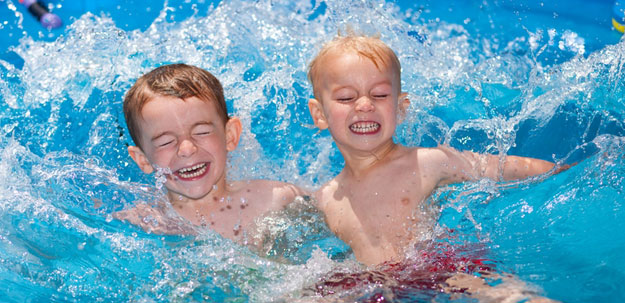
TECHNIQUE TIP OF THE MONTH
5 Swim Drills to Build Endurance & Fine – Tune Your Stroke
1. Single armThe single arm drill allows you to zero in on key elements of proper stroke technique one arm at a time: the pull, the recovery, the timing of the breath, and the kick. Isolating each side of the body with the single arm drill will help keep your stroke symmetrical and balanced. If the drill is too challenging and you are not able to maintain a horizontal body position in the water, hold on to a kickboard with your non-stroking arm for more buoyancy. Focus on maintaining a consistent, narrow kick throughout the drill for increased lift and propulsion.
2. Side kick
Developing a strong kick during training will allow you to use your legs strategically during your race. Swimming is a total-body sport and ignoring your legs means that you are also denying yourself an extra weapon to on race day.
In the side kick, keep one arm hyper-extended in front, with the other arm at your side, maintaining a constant kick and rotating your head to breathe. This is a foundational kicking drill that develops balance in the water, leg strength, and the ability to breathe on your side. Additionally, being on your side forces you to catch water as opposed to air, giving you a better leg workout than, for example, kicking with a kickboard.
Related: 6 Swimming Myths, Debunked
3. Tarzan drill
Also known as the water polo drill, this is a challenging drill that is perfect for open-water swimming. In this drill, you practice the freestyle stroke, but with one twist: your head remains entirely above the water, looking forward in a fixed position. The Tarzan drill helps to strengthen the kick, as well as the neck and back muscles needed to lift the head to sight buoys, other swimmers, or obstacles. I recommend using this drill only for short distances in combination with regular freestyle sets.
4. Side-to-side
The side-to-side drill allows you to work on such elements of the stroke as timing, body rotation, bilateral breathing, and proper balance in the water. This drill is similar to the full stroke, with the exception that you pause at the finish of each stroke and kick on your side for about two seconds. The pauses force you to rotate your body as you switch sides, and to practice a forceful kick in order to move through the water with greater ease after each pause. Side-to-side also requires you to practice bilateral breathing, which is important to keep the stroke balanced and symmetrical. Bilateral breathing is also useful in open water and can be used strategically during the race to see on both sides, to avoid looking at the sun, or to be able to sight landmarks on the shore.
5. Hyperkick
This challenging drill helps to strengthen the kick, keep the body line horizontal, and develop the neck and posterior shoulder muscles. It's both a conditioning exercise and a reinforcement of certain elements of proper freestyle stroke mechanics. In this drill, keep your arms hyper-extended in front of the face, hands locked, with the head above the surface of the water. Keeping the head above the surface will cause your hips to sink, so it is essential to keep up a fast, narrow kick during the drill to maintain a horizontal body position. Again, I recommend that this drill be used only for short distances to avoid placing undue strain on the neck and back muscles.
Although drills should not be the sole component of your workouts, they are essential to improve your efficiency in the water, prevent injuries, and add variety to your training so that you can be fully prepared to dominate the swim on race day. Read more on (ironman.com).
DID YOU KNOW? The CLOCK!!!
The clock is a true “frenemy”—a friend and an enemy. It never lies, but sometimes you wish it would. Because the clock never stops, you need to break it into manageable parts. Get your math cap on, because your coach may give you some intense, clock-based instructions for a set, such as:
“5 x 200s descend on the 4:30, negative split #5. Leaving on the top.”
Got it?
Here are some terms to help you translate Swimmerese and Clockspeak:
The topThe beginning of a minute (the 12 on a clock face), shown as either 0 or 60 on a traditional swimming pace clock, also called a sweep clock, as the hands sweep around the face. Seen as :00 on a digital clock. Stated as “leaving on the top” or “on the 60.”
The bottom
Again, on a traditional clock face, the bottom is actually the middle of a minute, where the number 6 is, which is the 30 on a sweep clock and :30 on a digital clock. Stated as “leaving on the bottom” or “on the 30.”
5 (or 10) seconds apart
The time to wait after one swimmer leaves the wall, before you leave. Watch the clock for your cue to push off.
Repetition
The number of swims within a set. In 5 x 200s, 5 is the repetition—you'll be swimming 200 yards, 5 times, on an interval.
Interval
The repetition of a constant, given amount of time, indicating when you should leave the wall. Stated as an amount of time, such as “on the 4:30.” This is the amount of time you have to both swim and rest before leaving for the next repetition in the set. In the 5 x 200s on the 4:30 example, you'll leave on the top, swim 200 yards, then rest for the remainder of time left in that 4 minutes and 30 seconds, at which time you will push off and swim the next repetition. If you “miss your interval,” that means it took you longer than 4 minutes and 30 seconds to swim the 200.
Rest interval
Sometimes coaches will give a rest interval, or RI. This is a little easier to understand—and easier to swim. If your RI is 30 seconds, then you get 30 seconds rest after each repetition—no matter how slow or fast you swam it. Some coaches do not use RIs because it does not encourage increased effort. In other words, if you know you are going to get a set amount of rest and won't miss your interval, you may not swim as fast.
Time
The actual number, in minutes and/or seconds, it took for you to swim the repetition. In the 5 x 200s on the 4:30 example, if you swim one of the 200s (the reps) in 3:57, that is your time for that rep. You now have 33 seconds to rest on the wall before pushing off for the next rep (and you'll leave on the bottom for that rep).
Pace
Your swimming speed, based on a time achieved for a given distance. Most commonly expressed per 100 yards, as in “a pace of 1:52.” So if you swim a 200, your pace would be expressed in the approximate amount of time it takes for you to swim 100 yards. If you swim at a pace of 1:52, your time for the 200 would be 3:44.Fitness Corner with Dr. Andre Acebo
Chiropractor and Strength Coach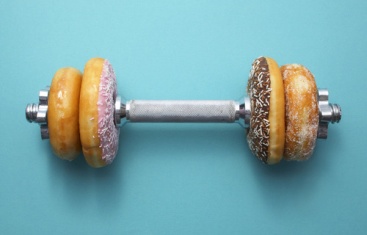 I have long been a proponent of strength training for maximum fitness. Movement and calorie burning aerobic activities are fine, but without strength training, you will fall short of your weight loss and body reshaping goals.
I have long been a proponent of strength training for maximum fitness. Movement and calorie burning aerobic activities are fine, but without strength training, you will fall short of your weight loss and body reshaping goals.HIIT (high intensity interval training) is good for burning calories and building muscular endurance. However, successful body transformation still needs basic strength training. The main difference has to do with loads lifted, time under tension (TUT), repetitions, and rest intervals. Heavier loads, longer TUT, lower reps, and longer rest periods along with the right type and amount of calories, will drastically change your body composition.
Remember the saying, "heavy weights won't make you big, donuts make you big."
Starting in June, I will be teaching a basic strength & conditioning class called "Fit & Trim" or take advantage of personal training if you don't yet feel comfortable with lifting weights on your own. On Saturday, the 6th of June, we will also be offering Carey’s Fitness Challenge at 9 in the morning. This accountability program helps you stay in line with your fitness goals.
As always, feel free to call or text me at 712-7769 with any questions.
Doc
Tab-Aqua’s second session will be starting later this month!
For more information, please contact Malinda Chambers ([email protected]) or Julia Collins
([email protected]).WHAT CAN WE LEARN FROM THE PROS?
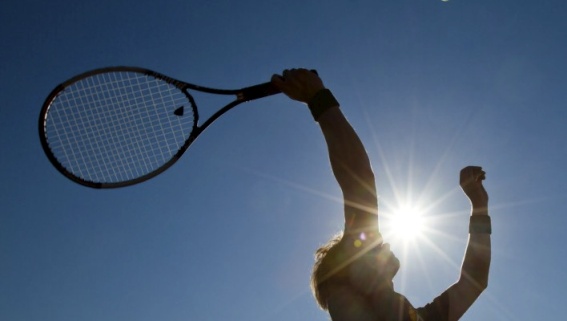 As our summer tennis gets into full swing and we’re in the middle of the French Open and with tons of tennis happening on the Tennis Channel and ESPN, I thought it might be worth a look to see what we can learn from watching the pros play. Professional tennis players practice what they do for dozens of hours each week and they typically started doing it when their age only had one digit in it. To do what they do demands years of practice, training, work and commitment none us at the club level can emulate. So the question becomes, “Can I actually learn anything from what the pros do to improve my own game?”
As our summer tennis gets into full swing and we’re in the middle of the French Open and with tons of tennis happening on the Tennis Channel and ESPN, I thought it might be worth a look to see what we can learn from watching the pros play. Professional tennis players practice what they do for dozens of hours each week and they typically started doing it when their age only had one digit in it. To do what they do demands years of practice, training, work and commitment none us at the club level can emulate. So the question becomes, “Can I actually learn anything from what the pros do to improve my own game?”1. Notice how consistent the pros are getting the return of serve back; and how they step in to take advantage of weaker second serves. Most of us don’t spend nearly enough time practicing returning serve. It is a critical part of our learning and absolutely a necessary stroke to master to take your game to the next level.
Be sure to spend time each occasion that you’re on the court to practice returning serve and watch your skill level and confidence grow.
2. Observe how big their target areas are versus going for the lines. 75% of their shots land well away from the side and baselines, however, most tennis observers typically only remember shots when the pros crack a winner landing on or just inches from the side or bases lines and they try to copy that. When the opportunity presents itself, the pros may hit the ball hard and aim close to the lines on the same shot going for the outright winner, but at the club level that’s a really hard skill to master. Aim 4-6 feet away from the lines most of the time, depending on your skill level. You’ll be more consistent, hit fewer errors, and win more matches.
3. Watch how some pros try to break the rhythm of their opponents with slices, different spins, and deep high shots. Mix up your game, experiment a bit with some new shots/strategies with a reasonable expectation of time to gain a greater level of skill. You’ll have fun learning new skills and will enjoy the game more.
4. The most important aspect in the game of tennis today and something we can really learn from watching the pros and can incorporate into our own game is about how they move their feet. Stop your tendency to watch the ball go back and forth over the net for a few games and focus on the footwork of the player closest to the camera. Turn up the volume, and take notice of the sound of when one player strikes the ball and their opponent’s timing of their “split step” to balance themselves and to prepare for moving to the ball quickly. When do they use cross over or shuffling steps to get to the ball? Depending on where their own shot lands, where do they recover to on the court? The pros make this game look comparatively easy because they anticipate and prepare for their shots much better than all of us. So study the pro’s movements and focus on incorporating better footwork into your own game. Then take notice of the impact it has on your technique and skill level, you may be amazed!
Simply put, don't try and copy the unique shot making skills and high level aspects of the pro’s game, they’re typically way beyond our reach. Instead, pay attention to these simpler elements of their play and watch your game improve dramatically!
See Ya’ On The Courts, Gary
Try our new LOW CALORIE smoothies!
Same great protein, same great taste!Zen Power-
Just 160 calories in 20 oz!
Vanilla Whey Protein
Matcha Green Tea Powder- filled with antioxidants!
Water and Ice
Mocha Java-
Just 170 Calories in 20oz!
Vanilla Whey Protein
Mocha Java Powder- a chocolatey, coffee taste sure to satisfy any craving; 56mg of caffeine!
Water and Ice
A Note from the Manager…..
Hello Members,Welcome to summer my friends. We hopefully will be able to get some heat here soon, which means perfect weather to enjoy the club. Please remember to let me know if there is anything our team can do to improve your membership.
We have had a great increase over the past couple of months in our tennis membership, and we are in the process of building our Central Coast Women’s Tennis League for our club. This is the first year we will have 5 teams (1 A, 1 A-‘s, 2 B+’s, and 1 B team) and are actively pursuing new members for our B team at this time. Have you played before and are interested in picking up the racket again? Please contact Mariano Parris at [email protected] so he can see what level you can play. Also do to the growth, I thought it would be a great time to revisit some of “The Code” that goes along with playing tennis in a social setting. Below is The Code from the USTA Assets. It is a great source of information for those just starting the game or those that need a refresh on the common courtesies of playing tennis with others. Thanks for taking the time to read it.
Enjoy!
Sara Dobroth, General Manager
THE CODE
THE PLAYERS’ GUIDE TO FAIR PLAY AND THE UNWRITTEN RULES OF TENNIS
The Code is not part of the ITF Rules of Tennis. Players shall follow The Code, except to the extent to which an official assumes some of their responsibilities. This edition of The Code is an adaptation of the original.
PREFACEWhen a serve hits a player’s partner who is stationed at the net, is it a let, fault, or loss of point? Likewise, what is the ruling when a serve, before touching the ground, hits an opponent who is standing back of the baseline? The answers to these questions are obvious to anyone who knows the fundamentals of tennis, but it is surprising the number of players who don’t know these fundamentals. All players have a responsibility to be familiar with the basic rules and customs of tennis. Further, it can be distressing when a player makes a decision in accordance with a rule and the opponent protests with the remark: “Well, I never heard of that rule before!” Ignorance of the rules constitutes a delinquency on the part of a player and often spoils an otherwise good match.
What is written here constitutes the essentials of The Code, a summary of procedures and unwritten rules that custom and tradition dictate all players should follow. No system of rules will cover every specific problem or situation. If players of goodwill follow the principles of The Code, they should always be able to reach an agreement, while at the same time making tennis more fun and a better game for all. The principles set forth in The Code shall apply in cases not specifically covered by the ITF Rules of Tennis or the USTA Regulations.
Before reading this, the following question may come to mind: Since there is a book that contains all the rules of tennis, is there a need for The Code? Isn’t it sufficient to know and understand all the rules? There are a number of things not specifically set forth in the rules that are covered by custom and tradition only. For example, if there is doubt on a line call, the opponent gets the benefit of the doubt. This result cannot be found in the rules. Further, custom dictates the standard procedures that players will use in reaching decisions. These are the reasons a code is needed.—Col. Nick Powel
PRINCIPLES
1. Courtesy is expected. Tennis is a game that requires cooperation and courtesy.
2. Points played in good faith are counted. All points played in good faith stand. For example, if after losing a point, a player discovers that the net was four inches too high, the point stands. If a point is played from the wrong court, there is no replay. If during a point, a player realizes that a mistake was made at the beginning (for example, service from the wrong court), the player shall continue playing the point. Corrective action may be taken only after a point has been completed.
Shaking hands at the end of a match is an acknowledgment by the players that the match is over.
WARM-UP
3. Warm-up is not practice. A player should provide the opponent a 5-minutewarm-up (ten minutes if there are no ballpersons). If a player refuses to warm up the opponent, the player forfeits the right to a warm-up. Some players confuse warm-up and practice. Each player should make a special effort to hit shots directly to the opponent. (If partners want to warm each other up while their opponents are warming up, they may do so.)
4. Warm-up serves and returns are taken before first serve of match. A player should take all warm-up serves before the first serve of a match. A player who returns serves should return them at a moderate pace in a manner that does not disrupt the server.
MAKING CALLS5. Player makes calls on own side of net. A player calls all shots landing on, or aimed at, the player’s side of the net.
6. Opponent gets benefit of doubt. When a match is played without officials, the players are responsible for making decisions, particularly for line calls. There is a subtle difference between player decisions and those of an on-court official. An official impartially resolves a problem involving a call, whereas a player is guided by the principle that any doubt must be resolved in favor of an opponent. A player in attempting to be scrupulously honest on line calls frequently will keep a ball in play that might have been out or that the player discovers too late was out. Even so, the game is much better played this way.
7. Ball touching any part of line is good. If any part of a ball touches a line, the ball is good. A ball 99% out is still 100% good. A player shall not call a ball out unless the player clearly sees space between where the ball hits and a line.
8. Ball that cannot be called out is good. Any ball that cannot be called out is considered to be good. A player may not claim a let on the basis of not seeing a ball. One of tennis’ more infuriating moments occurs after a long hard rally when a player makes a clean placement and an opponent says:“I’m not sure if it was good or out. Let’s play a let.” Remember, it is each player’s responsibility to call all balls landing on, or aimed at, the player’s side of the net. If a ball cannot be called out with certainty, it is good. When a player says an opponent’s shot was really out but offers to replay the point to give the opponent a break, it seems clear that the player actually doubted that the ball was out.
9. Either partner may make calls in doubles. Although either doubles partner may make a call, the call of a player looking down a line is more likely to be accurate than that of a player looking across a line.
10. All points are treated same regardless of their importance. All points in a match should be treated the same. There is no justification for considering a match point differently from a first point.
11. Requesting opponent’s help. When an opponent’s opinion is requested and the opponent gives a positive opinion, it must be accepted. If neither player has an opinion, the ball is considered good. Aid from an opponent is available only on a call that ends a point.
12. Out calls reversed. A player who calls a ball out shall reverse the call if the player becomes uncertain or realizes that the ball was good. The point goes to the opponent and is not replayed. However, when a receiver reverses a fault call on a serve that hit the net, the server is entitled to two serves.
13. Player calls own shots out. With the exception of the first serve, a player should call out the player’s own shots if the player clearly sees the ball out regardless of whether requested to do so by an opponent. The prime objective in making calls is accuracy. All players should cooperate to attain this objective.
14. Partners’ disagreement on calls. If one partner calls the ball out and the other partner sees the ball good, the ball is good. It is more important to give opponents the benefit of the doubt than to avoid possibly hurting a partner’s feelings. The tactful way to achieve the desired result is to tell a partner quietly of the mistake and then let the partner concede the point. If a call is changed from out to good, the principles of Code § 12 apply.
15. Audible or visible calls. No matter how obvious it is to a player that an opponent’s ball is out, the opponent is entitled to a prompt audible or visible out call.
16. Spectators never make calls. A player shall not enlist the aid of a spectator in making a call. No spectator has a part in a match.
17. Prompt calls eliminate two chance option. A player shall make all calls promptly after a ball has hit the court. A call shall be made either before the player’s return shot has gone out of play or before an opponent has had an opportunity to play the return shot. Prompt calls will quickly eliminate the “two chances to win the point” option that some players practice. To illustrate, a player is advancing to the net for an easy put away and sees a ball from an adjoining court rolling toward the court. The player continues to advance and hits the shot, only to have the supposed easy put away fly over the baseline. The player then claims a let. The claim is not valid because the player forfeited the right to call a let by choosing instead to play the ball. The player took a chance to win or lose and is not entitled to a second chance.
18. Let called when ball rolls on court. When a ball from another court enters the playing area, any player on the court affected may call a let as soon as the player becomes aware of the ball. The player loses the right to call a let if the player unreasonably delays in making the call.
19. Touches, hitting ball before it crosses net, invasion of opponent’s court, double hits, and double bounces. A player shall promptly acknowledge when:• A ball in play touches the player;
• The player touches the net or opponent’s court while a ball is in play;
• The player hits a ball before it crosses the net;
• The player deliberately carries or double hits a ball; or
• A ball bounces more than once in the player’s court. The opponent is not entitled to make these calls.
20. Balls hit through net or into ground. A player makes the ruling on a ball that the player’s opponent hits:
• Through the net; or• Into the ground before it goes over the net.
21. Making calls on clay courts. If any part of a ball mark touches a line on a clay court, the ball shall be called good. If only part of the mark on a court can be seen, this means that the missing part is on a line or tape. A player should take a careful second look at any point-ending placement that is close to a line on a clay court. Occasionally a ball will strike the tape, jump, and then leave a full mark behind the line. If a player hears the sound of a ball striking the tape and sees a clean spot on the tape near the mark, the player should give the point to the opponent. A player is not required to show an opponent the mark. The opponent shall not pass the net to inspect a mark.
SERVING22. Server’s request for third ball. When a server requests three balls, the receiver shall comply when the third ball is readily available. Distant balls shall be retrieved at the end of a game.
23. Avoid foot faults. Players should not foot fault because it violates the ITF Rules of Tennis. It is a foot fault when a foot just touches the line, even when the player does not follow the serve to the net.
24. Calling foot faults. The receiver or the receiver’s partner may call foot faults only after all reasonable efforts, such as warning the server and attempting to get an official to the court, have failed and the foot fault is so flagrant as to be clearly perceptible from the receiver’s side.
25. Service calls in doubles. In doubles the receiver’s partner should call the service line, and the receiver should call the sideline and the center service line. Nonetheless, either partner may call a ball that either clearly sees.
26. Service calls by serving team. Neither the server nor server’s partner shall make a fault call on the first service even if they think it is out because the receiver may be giving the server the benefit of the doubt. There is one exception. If the receiver plays a first service that is a fault and does not put the return in play, the server or server’s partner may make the fault call. The server and the server’s partner shall call out any second serve that either clearly sees out.
27. Service let calls. Any player may call a service let. The call shall be made before the return of serve goes out of play or is hit by the server or the server’s partner. If the serve is an apparent or near ace, any let shall be called promptly.
28. Obvious faults. A player shall not put into play or hit over the net an obvious fault. To do so constitutes rudeness and may even be a form of gamesmanship. On the other hand, if a player does not call a serve a fault and gives the opponent the benefit of a close call, the server is not entitled to replay the point.
29. Receiver readiness. The receiver shall play to the reasonable pace of the server. The receiver should make no effort to return a serve when the receiver is not ready. If a player attempts to return a serve (even if it is a “quick” serve), then the receiver (or receiving team) is presumed to be ready.
30. Delays during service. When the server’s second service motion is interrupted by a ball coming onto the court, the server is entitled to two serves. When there is a delay between the first and second serves:• The server gets one serve if the server was the cause of the delay;
• The server gets two serves if the delay was caused by the receiver or if there was outside interference. The time it takes to clear a ball that comes onto the court between the first and second serves is not considered sufficient time to warrant the server receiving two serves unless this time is so prolonged as to constitute an interruption. The receiver is the judge of whether the delay is sufficiently prolonged to justify giving the server two serves.
31. Server announces score. The server shall announce the game score before the first point of a game and the point score before each subsequent point of the game.
32. Disputes. Disputes over the score shall be resolved by using one of the following methods, which are listed in the order of preference:• Count all points and games agreed upon by the players and replay only disputed points or games;
• Play from a score mutually agreeable to all players;
• Spin a racket or toss a coin.
HINDRANCE ISSUES
33. Claiming a hindrance. A player who claims a hindrance must stop play as soon as possible.
34. Talking when ball is in play.
• Singles players should not talk during points.• Talking between doubles partners when the ball is moving toward them is allowed.
• Doubles players should not talk when the ball is moving toward their opponent’s court.
• When talking interferes with an opponent’s ability to play a ball, it is a hindrance. For example, if a doubles player hits a weak lob and yells “get back” and the yell distracts an opponent who is about to hit the ball, then the opponent may claim the point based on a deliberate hindrance. If the opponent chooses to play the lob and misses it, the opponent loses the point because the opponent did not make a timely claim of hindrance. For example, if a player yells after an injury or getting stung by a bee, this is an unintentional hindrance that would entitle the opponent to claim a let.
35. Body movement. A player may feint with the body while a ball is in play. A player may change position at any time, including while the server is tossing a ball. Any other movement or any sound that is made solely to distract an opponent, including, but not limited to, waving arms or racket or stamping feet, is not allowed.
36. Let due to unintentional hindrance. A player who is hindered by an opponent’s unintentional act or by something else outside the player’s control is entitled to a let only if the player could have made the shot had the player not been hindered. A let is not authorized for a hindrance caused by something within a player’s control. For example, a request for a let because a player tripped over the player’s own hat should be denied.
37. Grunting. A player should avoid grunting and making other loud noises. Grunting and other loud noises may bother not only opponents but also players on adjacent courts. In an extreme case, an opponent or a player on an adjacent court may seek the assistance of an official. Grunting and the making of loud noises that affect the outcome of a point are hindrances. Only an official may rule that these actions are hindrances and order that a let be played or a loss of point, depending on whether an official had previously warned the offending player.
38. Injury caused by player. When a player accidentally injures an opponent, the opponent suffers the consequences. Consider the situation where the server’s racket accidentally strikes the receiver and incapacitates the receiver. The receiver is unable to resume play within the time limit. Even though the server caused the injury, the server wins the match by retirement. On the other hand, when a player deliberately injures an opponent and affects the opponent’s ability to play, then the opponent wins the match by default. Hitting a ball or throwing a racket in anger is considered a deliberate act.
WHEN TO CONTACT OFFICIAL
39. Withdrawing from match or tournament. A player who has decided not to play a match or a tournament shall notify the Referee immediately.
40. Stalling. Stalling violates the continuous play principle of the ITF Rules of Tennis. A player who encounters a problem with stalling should contact an official. The following actions constitute stalling:
• Warming up longer than the allotted time;• Playing at about one-third a player’s normal pace;
• Taking more than 90 seconds on the odd-game changeover or more than 2 minutes on the set break.
• Taking longer than the time authorized during a rest period; • Starting a discussion or argument in order to rest;
• Clearing a missed first service that doesn’t need to be cleared; or
• Excessive bouncing of a ball before any serve.
Stalling is subject to penalty under the Point Penalty System.
41. Requesting officials during play. While normally a player may not leave the playing area, the player may contact an official for assistance. Some reasons for contacting an official include:
• Stalling;• Flagrant foot faults;
• A medical or bleeding timeout;
• A scoring dispute; or
• A pattern of bad calls. A player may refuse to play until an official responds.
BALL ISSUES
42. Retrieving stray balls. Each player is responsible for removing stray balls and other objects from the player’s end of the court. Whenever a ball is not in play, a player must honor an opponent’s request to remove a ball from the court or from an area outside the court that is reasonably close to the lines. A player shall not go behind an adjacent court to retrieve a ball or ask a player on an adjacent court to return a ball while a point is in play. When a player returns a ball from an adjacent court, the player shall wait until the point is over on the court where the ball is being returned and then return it directly to one of the players, preferably the server.
43. Catching a ball. If a player catches a ball in play before it bounces, the player loses the point regardless of where the player is standing.
44. New balls for third set. When a tournament specifies new balls for a third set, new balls shall be used unless all players agree otherwise.
MISCELLANEOUS
45. Clothing and equipment malfunction. If clothing or equipment, other than a racket, becomes unusable through circumstances outside the control of a player, play may be suspended for a reasonable period. A player may leave the court after a point is over to correct the problem. If a racket or string is broken, a player may leave the court to get a replacement, but the player is subject to code violations under the Point Penalty System.
46. Placement of towels. Towels are to be placed on the ground outside the net post or at the back fence. Clothing or towels should never be placed on a net.

